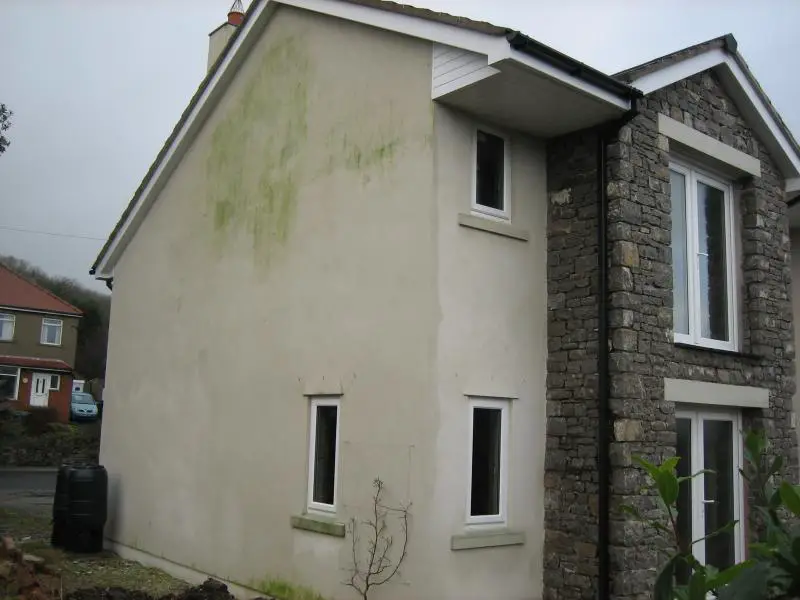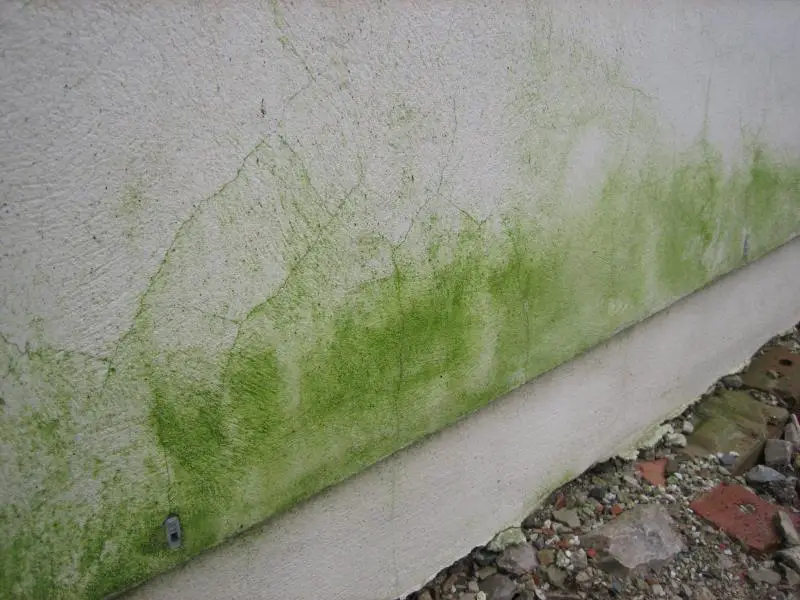Hi. About a year ago I finished the modifications/extensions to my house and had a local plasterer apply the external render. This involved him rendering onto old brick, new lightweight celcon blocks and new dense concrete blocks.
The render was formed from a sand/cement scratch coat with additives (I don't know which one) and a smooth top coat of white sand/ white cement with additives (same as scratch coat). There were no chippings used and no dyes. The walls were PVA'd prior to each coat being applied.
About 3 months ago I noticed some fine cracks in the bell cast area of one gable wall. Since then, the cracks have become larger (see pictures), more cracks have appeared higher up the wall and green mould has slowly spread around the area of the cracks.
It is only this wall that is affected. It is built of new dense concrete block and faces southwest (the direction of our local prevailing weather).
There is one other difference with this wall, although I don't know if it's relevant. Originally, I asked for the house to be wet dashed and this was the first wall the plasterers did. I didn't like it and asked them to change to a smooth render (not their fault so I naturally paid for the extra work). They said they would first try just taking off the top coat and apply a new finish on the old scratch coat. Unfortuneately this 'didn't go off properly' so I committed to taking it back to bare blocks and starting again.
I'm about to ask the plasterers back to have a look. If possible, I'd like to have some clue about the possible causes before we talk. Any advice would be appreciated.
The render was formed from a sand/cement scratch coat with additives (I don't know which one) and a smooth top coat of white sand/ white cement with additives (same as scratch coat). There were no chippings used and no dyes. The walls were PVA'd prior to each coat being applied.
About 3 months ago I noticed some fine cracks in the bell cast area of one gable wall. Since then, the cracks have become larger (see pictures), more cracks have appeared higher up the wall and green mould has slowly spread around the area of the cracks.
It is only this wall that is affected. It is built of new dense concrete block and faces southwest (the direction of our local prevailing weather).
There is one other difference with this wall, although I don't know if it's relevant. Originally, I asked for the house to be wet dashed and this was the first wall the plasterers did. I didn't like it and asked them to change to a smooth render (not their fault so I naturally paid for the extra work). They said they would first try just taking off the top coat and apply a new finish on the old scratch coat. Unfortuneately this 'didn't go off properly' so I committed to taking it back to bare blocks and starting again.
I'm about to ask the plasterers back to have a look. If possible, I'd like to have some clue about the possible causes before we talk. Any advice would be appreciated.



